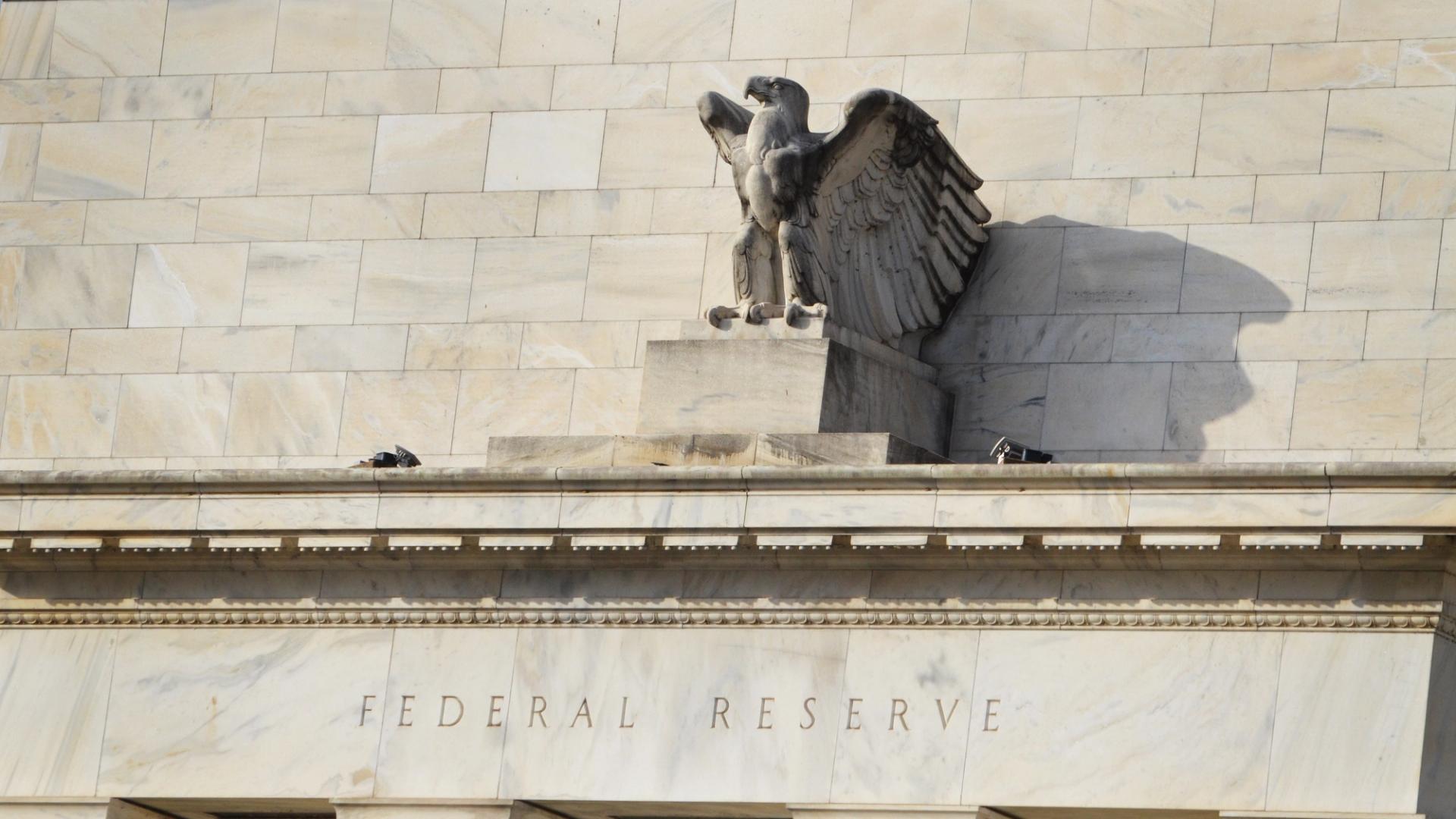Uncategorized
Wintermute CEO Evgeny Gaevoy Discusses the Future of Crypto Trading

Evgeny Gaevoy began his career in traditional finance, specializing in market making and prop trading. But by 2016, seeing the inefficiencies of legacy financial systems and the potential for disintermediation, Gaevoy realized there was an opportunity to create something entirely new and better.
With experience building up foreign exchange firm Optiver’s European ETF business — one of the largest in the EU — he decided to launch an algorithmic trading firm designed for the digital asset era. Since 2017, Wintermute has since grown into one of the largest algorithmic trading and liquidity providers in crypto, processing over $5 billion in daily trading volume and providing deep liquidity to 50+ trading venues across centralized and decentralized exchanges.
This series is brought to you by Consensus Hong Kong. Come and experience the most influential event in Web3 and Digital Assets, Feb.18-20. Register today and save 15% with the code CoinDesk15.
Here, Gaevoy, who will be speaking at Consensus Hong Kong, discusses how Asian crypto markets differ from those in the West, how he predicts AI will be used in trading and market making and how Wintermute is responding to the growing fragmentation of liquidity across multiple blockchains.
This interview has been condensed and lightly edited for clarity.
What led you to start Wintermute?
I started looking into the blockchain around 2016, which is relatively late compared to some early adopters. At the time, I was in traditional finance and what really interested me was disintermediation — cutting out the inefficiencies of custodians and prime brokers, which were painfully slow in how they operated. Blockchain seemed like a great way to disrupt that.
But back then, it all felt very theoretical. It wasn’t until 2017 that I really got into crypto. I quit my job, started looking around, and bought a small amount of bitcoin on Coinbase — just to test it out. Then it doubled in price in a week or two, and I barely paid attention because the volatility was just so insane compared to what I was used to in TradFi.
In TradFi market making, there are maybe 10 days a year when things get really exciting — when markets move 3-4%, and that’s considered a big deal. But in crypto, that kind of movement happens all the time. So I figured, I know prop trading, I know market making and I like building things from scratch — so why not build a market-making business in crypto? That’s how Wintermute came to be.
You’ve been actively engaged in both Western and Asian markets — what are the biggest differences you’ve observed between the two?
Regulation-wise, everything is still primarily driven by the U.S. Even in Asia, most companies watch what the U.S. is doing rather than setting their own independent course.
When it comes to OTC and institutional trading, China is the biggest missing piece. Chinese institutions and corporations are still not allowed to touch crypto, and until the Chinese Communist Party changes its stance, we won’t see proper institutional flows from there.
What key opportunities are you seeing coming out of Asia right now?
The most interesting development right now is how certain countries are opening up to crypto in meaningful ways. Japan is becoming increasingly attractive due to its improved tax policies for crypto. By reducing tax burdens on crypto holdings, the country is making it easier for both businesses and individuals to participate in the market without excessive financial penalties. This is a significant move that could drive liquidity and institutional involvement.
South Korea is another exciting case, mainly because of its massive retail market. However, a major limitation is that foreign market makers are still restricted from integrating with local exchanges. If regulators were to allow external liquidity providers to participate, it could unlock a tremendous amount of liquidity. Right now, Korean exchanges remain fairly isolated, which is why we still see phenomena like the Kimchi premium — a direct result of structural barriers preventing global liquidity from flowing freely into the market.
Hong Kong, on the other hand, plays a unique role as a pilot program for China. While China still officially bans crypto, Hong Kong is establishing regulated markets and institutional frameworks that could serve as a testing ground for how China might engage with crypto in the future. This makes Hong Kong an important region to watch, especially in terms of institutional adoption.
The key thing to watch is how these markets evolve, because they each offer different entry points into Asia’s crypto adoption cycle — Japan is attracting institutions with tax incentives, Korea is a retail-heavy market with potential liquidity unlocks, and Hong Kong is a regulatory experiment that could have broader implications for China.
What have been some of the lesser-known or unexpected catalysts driving crypto adoption and liquidity in Asia?
The biggest surprise for me is that a lot of the narratives we see on Crypto Twitter and from VCs don’t reflect what’s actually happening on the ground.
A great example is Tron and Tether. In Asia and Latin America, USDT on Tron is the most widely used crypto asset for payments, especially for the unbanked and those looking to escape currency devaluation. But in the West, nobody talks about it. There are also a lot of projects and DeFi protocols that get ignored in the Western echo chamber but are doing really well in Asia. That’s why I think it’s crucial to keep a pulse on what’s happening in Asia, rather than just relying on Western narratives.
Do you think AI will ever autonomously run an entire market-making operation?
AI is already widely used in trading, and it has been for quite some time. Machine learning is nothing new — firms have been using it in prop trading for years. What’s different now is just how much more advanced AI models are getting, and how much raw computing power is being thrown at the problem.
Take XTX for example, (another algorithmic trading firm) — they have an insane amount of GPUs dedicated to machine learning. They’re even building huge data centers in Finland just to run their AI models. It’s not something brand new in trading, but the scale at which it’s being deployed is increasing rapidly.
Will AI completely replace human traders? I don’t think so — at least not in the next 5-10 years. The biggest limiting factor is how much you can actually automate.
Right now, you have different styles of market-making firms — some heavily rely on AI, while others still have a lot of human input. Wintermute falls somewhere in the middle. We use AI where it makes sense, but there’s still a lot of human decision-making involved, especially when it comes to market dynamics that AI doesn’t fully understand yet.
The real challenge is adapting AI to a market like crypto, which is still highly unpredictable and lacks the structured data sets that traditional finance firms have access to. AI is great at pattern recognition, but it still struggles with black swan events and highly volatile markets. Until AI reaches a level where it can fully adapt to unexpected market shifts, humans will still play an important role.
How does Wintermute approach the challenge of liquidity becoming increasingly fragmented across different blockchains?
At Wintermute, our core strategy is to facilitate and promote as much diversity as possible when it comes to blockchains, centralized exchanges and decentralized exchanges. We don’t see fragmentation as a bad thing — it actually creates more opportunities for us.
Right now, we’re connected to all major centralized exchanges, a huge range of OTC counterparties and dozens of DeFi ecosystems. This diversity is our competitive advantage. Instead of waiting for the market to converge, we embrace the fragmentation and position ourselves to be everywhere liquidity exists.
Could things become more centralized over time? Maybe, but I don’t think so, at least not in the way TradFi works. In traditional finance, you have CME for derivatives, a few dominant stock exchanges and a relatively small number of key players.
Crypto is different. It’s inherently decentralized, and I think it will stay that way. There will always be new blockchains, new trading venues and new liquidity pools. Instead of everything consolidating into a few big players, I think we’ll see a continued expansion of ecosystems — and firms like Wintermute need to be agile enough to operate in all of them.
What are you most excited to discuss on stage at Consensus Hong Kong?
One of the things I would like to talk about is market structure and the role of market makers in crypto. There are so many misconceptions about what we do. For example, if you go on Crypto Twitter, you’ll see people blaming market makers for causing price crashes, which is just not how it works. There’s this huge misunderstanding about what market makers actually do, how we operate, and how we provide liquidity. I’d like to dispel some of those myths, explain how the market really functions and maybe even challenge some of the false narratives that are out there.
Uncategorized
Asia Morning Briefing: Native Markets Wins Right to Issue USDH After Validator Vote

Good Morning, Asia. Here’s what’s making news in the markets:
Welcome to Asia Morning Briefing, a daily summary of top stories during U.S. hours and an overview of market moves and analysis. For a detailed overview of U.S. markets, see CoinDesk’s Crypto Daybook Americas.
Hyperliquid’s validator community has chosen Native Markets to issue USDH, ending a weeklong contest that drew proposals from Paxos, Frax, Sky (ex-MakerDAO), Agora, and others.
Native Markets, co-founded by former Uniswap Labs president MC Lader, researcher Anish Agnihotri, and early Hyperliquid backer Max Fiege, said it will begin rolling out USDH “within days,” according to a post by Fiege on X.
According to onchain trackers, Native Markets’ proposal took approximately 70% of validators’ votes, while Paxos took 20%, and Ethena came in at 3.2%.
The staged launch starts with capped mints and redemptions, followed by a USDH/USDC spot pair before caps are lifted.
USDH is designed to challenge Circle’s USDC, which currently dominates Hyperliquid with nearly $6 billion in deposits, or about 7.5% of its supply. USDC and other stablecoins will remain supported if they meet liquidity and HYPE staking requirements.
Most rival bidders had promised to channel stablecoin yields back to the ecosystem with Paxos via HYPE buybacks, Frax through direct user yield, and Sky with a 4.85% savings rate plus a $25 million “Genesis Star” project.
Native Markets’ pitch instead stressed credibility, trading experience, and validator alignment.
Market Movement
BTC: BTC has recently reclaimed the $115,000 level, helped by inflows into ETFs, easing U.S. inflation data, and growing expectations for interest rate cuts. Also, technical momentum is picking up, though resistance sits around $116,000, according to CoinDesk’s market insights bot.
ETH: ETH is trading above $4600. The price is being buoyed by strong ETF inflows.
Gold: Gold continues to trade near record highs as traders eye dollar weakness on expected Fed rate cuts.
Elsewhere in Crypto:
Uncategorized
BitMEX Co-Founder Arthur Hayes Sees Money Printing Extending Crypto Cycle Well Into 2026

Arthur Hayes believes the current crypto bull market has further to run, supported by global monetary trends he sees as only in their early stages.
Speaking in a recent interview with Kyle Chassé, a longtime bitcoin and Web3 entrepreneur, the BitMEX co-founder and current Maelstrom CIO argued that governments around the world are far from finished with aggressive monetary expansion.
He pointed to U.S. politics in particular, saying that President Donald Trump’s second term has not yet fully unleashed the spending programs that could arrive from mid-2026 onward. Hayes suggested that if expectations for money printing become extreme, he may consider taking partial profits, but for now he sees investors underestimating the scale of liquidity that could flow into equities and crypto.
Hayes tied his outlook to broader geopolitical shifts, including what he described as the erosion of a unipolar world order. In his view, such periods of instability tend to push policymakers toward fiscal stimulus and central bank easing as tools to keep citizens and markets calm.
He also raised the possibility of strains within Europe — even hinting that a French default could destabilize the euro — as another factor likely to accelerate global printing presses. While he acknowledged these policies eventually risk ending badly, he argued that the blow-off top of the cycle is still ahead.
Turning to bitcoin, Hayes pushed back on concerns that the asset has stalled after reaching a record $124,000 in mid-August.
He contrasted its performance with other asset classes, noting that while U.S. stocks are higher in dollar terms, they have not fully recovered relative to gold since the 2008 financial crisis. Hayes pointed out that real estate also lags when measured against gold, and only a handful of U.S. technology giants have consistently outperformed.
When measured against bitcoin, however, he believes all traditional benchmarks appear weak.
Hayes’ message was that bitcoin’s dominance becomes even clearer once assets are viewed through the lens of currency debasement.
For those frustrated that bitcoin is not posting fresh highs every week, Hayes suggested that expectations are misplaced.
In his telling, investors from the traditional world and those in crypto actually share the same premise: governments and central banks will print money whenever growth falters. Hayes says traditional finance tends to express this view by buying bonds on leverage, while crypto investors hold bitcoin as the “faster horse.”
His conclusion is that patience is essential. Hayes argued that the real edge of holding bitcoin comes from years of compounding outperformance rather than short-term speculation.
Coupled with what he sees as an inevitable wave of money creation through the rest of the decade, he believes the present crypto cycle could stretch well into 2026, far from exhausted.
Uncategorized
Bitcoin Bulls Bet on Fed Rate Cuts To Drive Bond Yields Lower, But There’s a Catch

On Sept. 17, the U.S. Federal Reserve (Fed) is widely expected to cut interest rates by 25 basis points, lowering the benchmark range to 4.00%-4.25%. This move will likely be followed by more easing in the coming months, taking the rates down to around 3% within the next 12 months. The fed funds futures market is discounting a drop in the fed funds rate to less than 3% by the end of 2026.
Bitcoin (BTC) bulls are optimistic that the anticipated easing will push Treasury yields sharply lower, thereby encouraging increased risk-taking across both the economy and financial markets. However, the dynamics are more complex and could lead to outcomes that differ significantly from what is anticipated.
While the expected Fed rate cuts could weigh on the two-year Treasury yield, those at the long end of the curve may remain elevated due to fiscal concerns and sticky inflation.
Debt supply
The U.S. government is expected to increase the issuance of Treasury bills (short-term instruments) and eventually longer-duration Treasury notes to finance the Trump administration’s recently approved package of extended tax cuts and increased defense spending. According to the Congressional Budget Office, these policies are likely to add over $2.4 trillion to primary deficits over ten years, while Increasing debt by nearly $3 trillion, or roughly $5 trillion if made permanent.
The increased supply of debt will likely weigh on bond prices and lift yields. (bond prices and yields move in the opposite direction).
«The U.S. Treasury’s eventual move to issue more notes and bonds will pressure longer-term yields higher,» analysts at T. Rowe Price, a global investment management firm, said in a recent report.
Fiscal concerns have already permeated the longer-duration Treasury notes, where investors are demanding higher yields to lend money to the government for 10 years or more, known as the term premium.
The ongoing steepening of the yield curve – which is reflected in the widening spread between 10- and 2-year yields, as well as 30- and 5-year yields and driven primarily by the relative resilience of long-term rates – also signals increasing concerns about fiscal policy.
Kathy Jones, managing director and chief income strategist at the Schwab Center for Financial Research, voiced a similar opinion this month, noting that «investors are demanding a higher yield for long-term Treasuries to compensate for the risk of inflation and/or depreciation of the dollar as a consequence of high debt levels.»
These concerns could keep long-term bond yields from falling much, Jones added.
Stubborn inflation
Since the Fed began cutting rates last September, the U.S. labor market has shown signs of significant weakening, bolstering expectations for a quicker pace of Fed rate cuts and a decline in Treasury yields. However, inflation has recently edged higher, complicating that outlook.
When the Fed cut rates in September last year, the year-on-year inflation rate was 2.4%. Last month, it stood at 2.9%, the highest since January’s 3% reading. In other words, inflation has regained momentum, weakening the case for faster Fed rate cuts and a drop in Treasury yields.
Easing priced in?
Yields have already come under pressure, likely reflecting the market’s anticipation of Federal Reserve rate cuts.
The 10-year yield slipped to 4% last week, hitting the lowest since April 8, according to data source TradingView. The benchmark yield has dropped over 60 basis points from its May high of 4.62%.
According to Padhraic Garvey, CFA, regional head of research, Americas at ING, the drop to 4% is likely an overshoot to the downside.
«We can see the 10yr Treasury yield targeting still lower as an attack on 4% is successful. But that’s likely an overshoot to the downside. Higher inflation prints in the coming months will likely cause long-end yields some issues, requiring a significant adjustment,» Garvey said in a note to clients last week.
Perhaps rate cuts have been priced in, and yields could bounce back hard following the Sept. 17 move, in a repeat of the 2024 pattern. The dollar index suggests the same, as noted early this week.
Lesson from 2024
The 10-year yield fell by over 100 basis points to 3.60% in roughly five months leading up to the September 2024 rate cut.
The central bank delivered additional rate cuts in November and December. Yet, the 10-year yield bottomed out with the September move and rose to 4.57% by year-end, eventually reaching a high of 4.80% in January of this year.
According to ING, the upswing in yields following the easing was driven by economic resilience, sticky inflation, and fiscal concerns.
As of today, while the economy has weakened, inflation and fiscal concerns have worsened as discussed earlier, which means the 2024 pattern could repeat itself.
What it means for BTC?
While BTC rallied from $70,000 to over $100,000 between October and December 2024 despite rising long-term yields, this surge was primarily fueled by optimism around pro-crypto regulatory policies under President Trump and growing corporate adoption of BTC and other tokens.
However, these supporting narratives have significantly weakened looking back a year later. Consequently, the possibility of a potential hardening of yields in the coming months weighing over bitcoin cannot be dismissed.
Read: Here Are the 3 Things That Could Spoil Bitcoin’s Rally Towards $120K
-

 Business11 месяцев ago
Business11 месяцев ago3 Ways to make your business presentation more relatable
-

 Fashion11 месяцев ago
Fashion11 месяцев agoAccording to Dior Couture, this taboo fashion accessory is back
-

 Entertainment11 месяцев ago
Entertainment11 месяцев ago10 Artists who retired from music and made a comeback
-

 Entertainment11 месяцев ago
Entertainment11 месяцев ago\’Better Call Saul\’ has been renewed for a fourth season
-

 Entertainment11 месяцев ago
Entertainment11 месяцев agoNew Season 8 Walking Dead trailer flashes forward in time
-

 Business11 месяцев ago
Business11 месяцев ago15 Habits that could be hurting your business relationships
-

 Entertainment11 месяцев ago
Entertainment11 месяцев agoMeet Superman\’s grandfather in new trailer for Krypton
-

 Entertainment11 месяцев ago
Entertainment11 месяцев agoDisney\’s live-action Aladdin finally finds its stars





